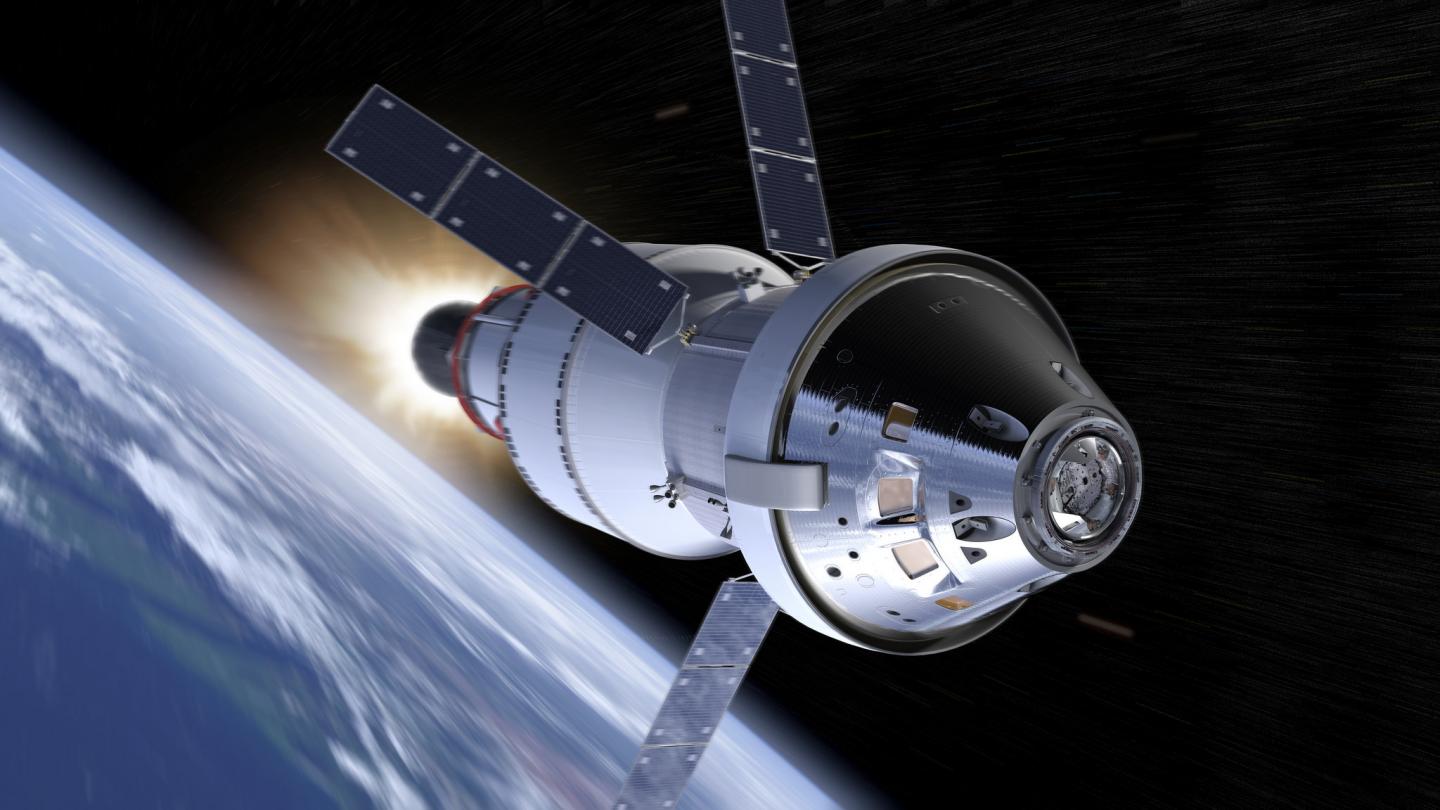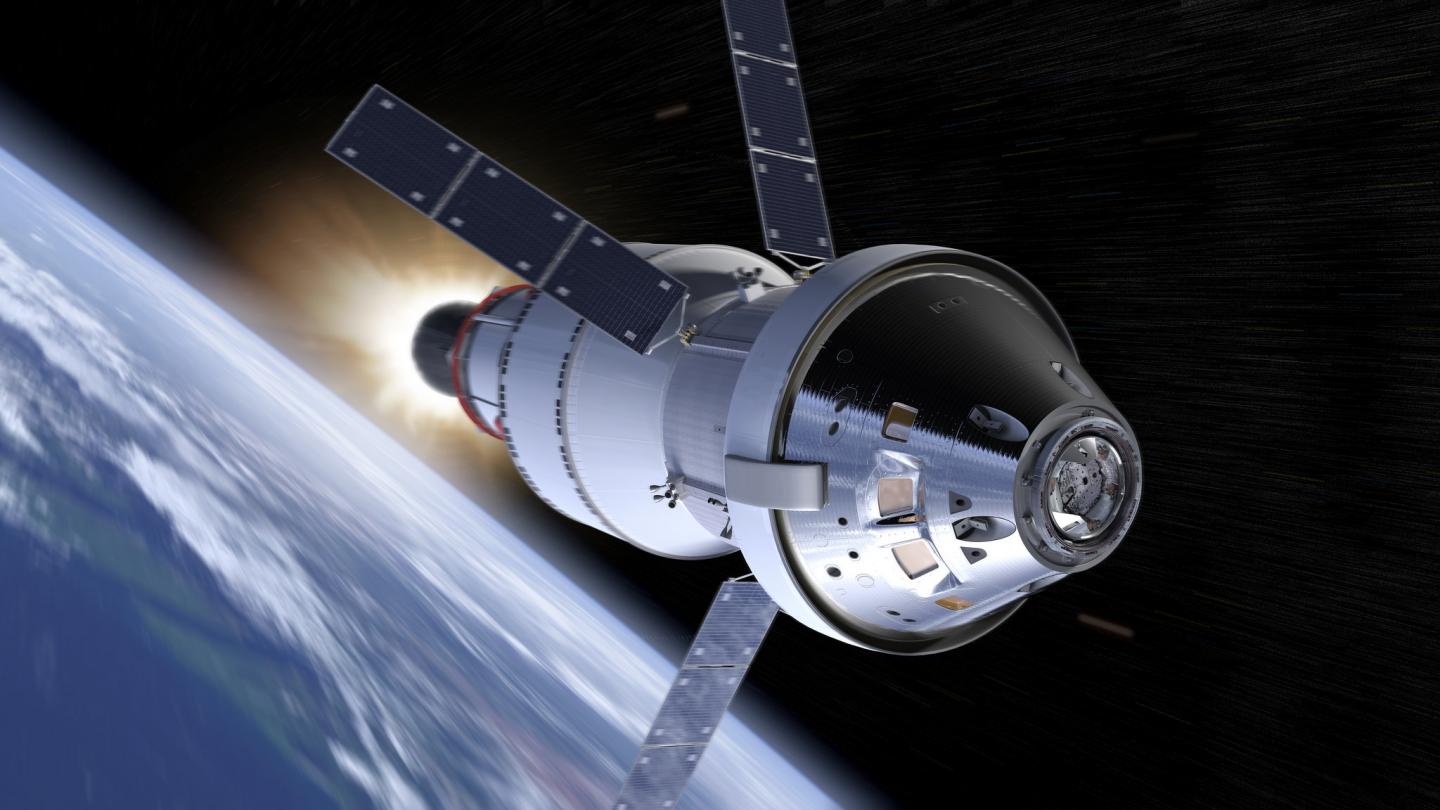
Credit: NASA
NASA is working to forever change the way astronauts communicate to and from space using an advanced laser communications system called LEMNOS, which will enable exponentially faster connections than ever before.
Imagine being able to watch 4K ultra-high-definition (UHD) video as humans take their first steps on another planet. Or imagine astronauts picking up a cell phone and video-conferencing their family and friends from 34 million miles away, just the same as they might on Earth. LEMNOS, Laser-Enhanced Mission and Navigation Operational Services, may make these capabilities and more a reality in the near future. The project was named for the island, Lemnos, where the mythical hero Orion regained his sight, according to Greek lore. Similarly, LEMNOS will provide sight for NASA's next-generation Orion spacecraft.
"Laser communications will revolutionize data return from destinations beyond low-Earth orbit, enhance outreach opportunities from outer space and improve astronauts' quality of life on long space missions," said Don Cornwell, director of the Advanced Communication and Navigation division at the Space Communications and Navigation program office at NASA Headquarters. "As we strive to put humans on Mars for the first time, it's imperative that we develop a communications system to support these activities at the highest level possible."
Laser communications, also known as optical communications, is the latest space communications technology, able to provide data rates as much as a hundred times higher than current systems. This means, for example, that astronauts could send and receive ultra-high-definition video from the surface of Mars. No mission to Mars has yet had that capability. Something that basic could have wide-reaching applications, allowing the American public to "ride along" as our astronauts explore deep space while also enabling scientific discoveries with much higher resolution images and data.
The Exploration and Space Communications (ESC) projects division at NASA's Goddard Space Flight Center in Greenbelt, Maryland, has been tapped to build LEMNOS in collaboration with the MIT Lincoln Laboratory in Lexington, Massachusetts. They worked with other NASA centers to determine specific needs the system can fulfill.
"As we started thinking about the possibility of laser communications on Orion, I spoke with the flight controllers at Johnson Space Center who are developing the communications plan for Orion's deep space missions. They were talking about enabling communications capabilities that we take for granted, but that are so foreign in space, from streaming scientific data and video in real time, to allowing astronauts to watch the Super Bowl or keep up with an election," said Mark Brumfield, deputy program manager of implementation for ESC. "Being able to connect with society could have great impacts to astronauts' mental health during the mission. Right now, they wouldn't be able to make those connections in a meaningful way, but optical communications will give us that capability."
In the nearly 50 years between the Apollo program and the Lunar Reconnaissance Orbiter mission, data return vastly improved, as evidenced by the difference between Apollo 8's and LRO's earthrise images, which were relayed to Earth via a much higher-rate system. While Apollo's communications system supported 51 kilobytes of data per second, LEMNOS will be able to support communications at rates of at least 80 megabytes per second.
The project just got underway at Goddard, with a goal to test LEMNOS for the first time on the second flight of Orion beyond the moon. Scheduled for one week with the option to extend for a longer mission, it will be the perfect opportunity to test the laser communications system, operating it continuously for up to an hour a day.
After the initial mission, Brumfield speculates NASA could add more laser communications terminals on future Orion exploration missions. This would increase communications capability because of the line-of-sight requirement for LEMNOS. He says it would be an evolutionary change to the way NASA does space communications.
The Space Communication and Navigation program office at NASA Headquarters provides programmatic oversight to the project. The communications team at Goddard has been tapped to build and implement the system in collaboration with MIT Lincoln Laboratory.
###
Media Contact
Ashley Hume
[email protected]
@NASAGoddard
http://www.nasa.gov/goddard
############
Story Source: Materials provided by Scienmag





